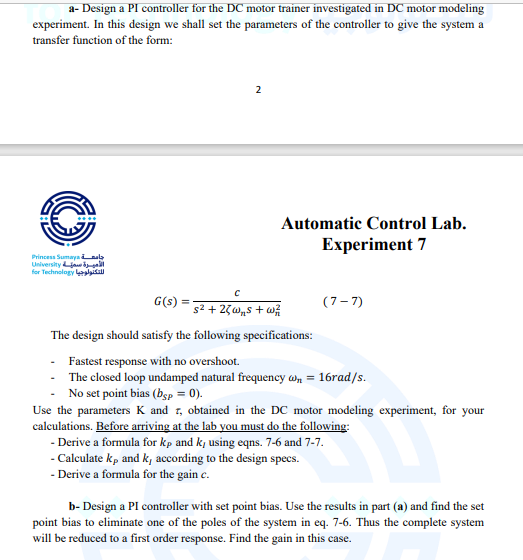Question
G(s)=(c)/(s^(2)+2zeta omega _(n)s+omega _(n)^(2)),(7-7) The design should satisfy the following specifications: Fastest response with no overshoot. The closed loop undamped natural frequency omega _(n)=16ra(d)/(s)
G(s)=(c)/(s^(2)+2\\\\zeta \\\\omega _(n)s+\\\\omega _(n)^(2)),(7-7)\ The design should satisfy the following specifications:\ Fastest response with no overshoot.\ The closed loop undamped natural frequency
\\\\omega _(n)=16ra(d)/(s).\ No set point bias
(b_(SP)=0).\ Use the parameters
Kand
\\\\tau , obtained in the DC motor modeling experiment, for your\ calculations. Before arriving at the lab you must do the following:\ Derive a formula for
k_(p)and
k_(l)using eqns. 7-6 and 7-7.\ Calculate
k_(P)and
k_(l)according to the design specs.\ Derive a formula for the gain
c.\ b- Design a PI controller with set point bias. Use the results in part (a) and find the set\ point bias to eliminate one of the poles of the system in eq. 7-6. Thus the complete system\ will be reduced to a first order response. Find the gain in this case.

Step by Step Solution
There are 3 Steps involved in it
Step: 1

Get Instant Access to Expert-Tailored Solutions
See step-by-step solutions with expert insights and AI powered tools for academic success
Step: 2

Step: 3

Ace Your Homework with AI
Get the answers you need in no time with our AI-driven, step-by-step assistance
Get Started


